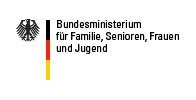Aspects
Nature conservancy – gender aspects
- Images: the image of “the nature conservationist” is still predominantly a male one in the public perception, without any acknowledgement of gendering. What impact does this have on content, communication and planning of measures in nature conservancy?
- Models: nature conservancy is essentially communicated via images of actually lived models. Here, too, it is often a male perspective on the history of nature conservancy that dominates. If this is “gendered” then more people are reached.
- Representation: Of the 97 associations in the German Nature Conservancy Ring, 93 are chaired by men, and only 4 by women. GM also involves improving the representation of women in leading positions in nature conservancy associations, in public authorities and scientific research institutions.
- Prizes: recognition for nature conservancy is predominantly accorded in the form of prizes and awards to men, the value of whose commitment is thus enhanced. GM demands that the part played by women should also be recognized.
- Commitment: women give most of the professional and honorary commitment in nature conservancy. It is therefore important to take appropriately into account their specific requirements and needs in communication and the award of public grants, e.g. in campaigns or in the planning of sports fields and parks.
Further reading:
Bouvret, Florence: Towards Sustainable Development? Gender Mainstreaming and Environmental Integration in the European Commission: A comparative Analysis, Brussels 2001
Bundesamt für Naturschutz (Hrsg.)/Hayn, Doris (Bearb.): Gender Mainstreaming im Naturschutz, Münster 2004
Deutscher Naturschutzring (DNR): Projekt Gender Greenstreaming - Geschlechtergerechtigkeit im Natur- und Umweltschutz, u.a. Dokumentation der Zukunftskonferenz "Vielfältig sein und nachhaltig werden – natürlich geschlechtergerecht!" vom 17. März 2006
Nebelung, Andreas; Poferl, Angelika; Schultz, Irmgard: Geschlechterverhältnisse - Naturverhältnisse. Feministische Auseinandersetzungen und Perspektiven der Umweltsoziologie, Soziologie und Ökologie Nr. 6, Opladen 2001
Schultz, Irmgard: Zum Instrument eines Gender Impact Assessment (dargestellt am Beispiel der geschlechtsspezifischen Wirkungsabschätzung des 5. Rahmenprogramms der EU), in: Gender & Environment in der praktischen Umweltpolitik, Reihe "Dokumentationen der Heinrich Böll Stiftung" Nr. 10, Berlin 2001
Bundesamt für Naturschutz (Hrsg.)/Hayn, Doris (Bearb.): Gender Mainstreaming im Naturschutz, Münster 2004
Deutscher Naturschutzring (DNR): Projekt Gender Greenstreaming - Geschlechtergerechtigkeit im Natur- und Umweltschutz, u.a. Dokumentation der Zukunftskonferenz "Vielfältig sein und nachhaltig werden – natürlich geschlechtergerecht!" vom 17. März 2006
Nebelung, Andreas; Poferl, Angelika; Schultz, Irmgard: Geschlechterverhältnisse - Naturverhältnisse. Feministische Auseinandersetzungen und Perspektiven der Umweltsoziologie, Soziologie und Ökologie Nr. 6, Opladen 2001
Schultz, Irmgard: Zum Instrument eines Gender Impact Assessment (dargestellt am Beispiel der geschlechtsspezifischen Wirkungsabschätzung des 5. Rahmenprogramms der EU), in: Gender & Environment in der praktischen Umweltpolitik, Reihe "Dokumentationen der Heinrich Böll Stiftung" Nr. 10, Berlin 2001
erstellt von Administrator
—
zuletzt verändert:
02.01.2010 20:08





